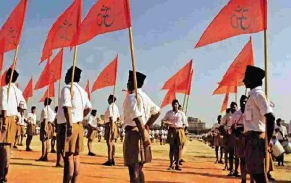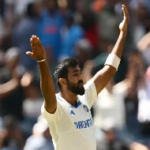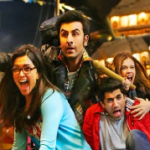Written By
Pramode Mallik
The Year 2025 is remarkable for India as the Rashtriya Swayamsevak Sangh completes its one hundred years of existence.
Established on September 27, 1925, by Keshav Baliram Hedgewar, to organize Hindus, it has emerged as the biggest right-wing, ultra-nationalist and aggressive Hindutva outfit with lakhs of people attending ‘shakhas’ every day across the country.
What began as a small local outfit to unite Hindus has emerged as an organization that decides the government and its policies.
RSS: Hindutva Behemoth
After a rollercoaster ride of a hundred years, the Hindutva organization has become the behemoth that not only impacts the politics of the country, but also the social fabrics, economics, and pervades through almost all aspects of life.
It is naive to consider the RSS as a simple organization. Rather, it is the source or the mother organization of a large body of outfits, collectively called the “Sangh Parivar”.
The ruling party of the Bhartiya Janta Party, the Bajrang Dal, the Vishwa Hindu Parishad, the Durga Vahini, and erstwhile Hindu Mahasabha and Bharatia Jansangh, to name a few of them.
The clout of the ubiquitous Sangh Parivar can be understood by he fact that it has as many as 65 organizations associated with it with their members running into tens of thousands in just one state- Maharashtra. They hit the headlines last year when they joined hands to launch a campaign called “Sajag Raho” in the state.
‘Hindu Rashtra’
The RSS openly says that it aims to establish a Hindu nation or the Hindu Rashtra by uniting the Hindus. It also claims to work unitedly with all members of the Sangh Pariwar to spread the ideology of Hindutva and to “strengthen” the Hindu community so that the ideal of upholding an Indian culture and its civilizational values is promoted.
On the other hand, it has been alleged that the RSS was “founded on the premise of Hindu supremacy”. It has also been accused of an intolerance towards minorities, in particular anti-Muslims.
Why Was RSS Banned Four Times?
Due to its anti-Muslim rhetoric, the fundamentalist Hindu organization was banned four times: first it was banned for four days in 1947.
The then Home Minister Ballabh Bhai Patel banned it in 1948 after RSS member Nathram Godse assassinated Mahatma Gandhi.
Indira Gandhi banned the RSS during the emergency of 1975-77.
It was also banned after the demolition of Babri Masjid in 1992.
Scholars believe that the Hindu outfit spreads hate against Muslims.
RSS: Community Outreach, Disaster Relief
The RSS also gets involved in community outreach, disaster relief, and cultural preservation through its ‘shakhas’ that runs in thousands.
However, critics believe, the Hindutva outfit uses these as mere facades with ulterior motives.
Similarly, the RSS focuses on education through 30,000 Shishu Mandir and Vidya Mandir schools spread across the country, providing cheaper education to 30 lakh children every year, a massive number by any standard.
However, critics allege the RSS adopts the policy of “catch them young” and takes lakhs of Hindu children under its wings at an earlier age and inculcate its values in them, further consolidating its position.
RSS: 73,117 ‘Shakhas’
The Hindu behemoth has such a gigantic structure that it has 73,117 Shakhas, which are held at 45,600 Sthans, 27,717 Milans and 10,567 Mandalis, the total Point of work was 1,57,001 places.
Not satisfied with this phenomenal growth, the RSS plans to increase the number of “shakhas” to one lakh by the time it celebrates its birth century in September 2025.
First Communal Clash
Barely two years after its establishment, the Hindu outfit hit the headlines for its communal agenda in 1927 when its founder Keshav Baliram Hedgewar led a Hindu religious procession for Ganesha, in front of a mosque with loud music and beating of drums.
It led to an escalation of communal tension when the Muslims retaliated on Lakshmi Puja. The Hindu-Muslim riots broke out in the Mahal area of Nagpur and it lasted for three days.
Hindu Mahasabha Impacts RSS
The RSS and its founder Hedgewar were deeply influenced by the Hindu Mahasabha and noted Hindu leader Madan Mohan Malviya, as they had common agenda and ideologies.
After meeting Hedgear in 1923, Malviya said, “Friendship could exist between equals. If the Hindus made themselves strong and the rowdy section among the Mahomedans were convinced they could not safely rob and dishonor Hindus, unity would be established on a stable basis.”
RSS Vs Freedom Movement
Hedgewar adopted the policy of keeping the RSS completely away from politics and so he did not allow the outfit to take part in the independence movement lest it could be construed as being anti-British.
According to RSS biographer C. P. Bhishikar, though the outfit participated in the ‘Independence Day’ on January 26, 1930, it avoided it afterward.
Similarly, when Mahatma Gandhi launched “Satyagrah” in April 1930, Hedgewar participated in it, but asked the RSS members not to do so declaring that the RSS had nothing to do with the movement.
In an attempt to keep itself from the communal agenda, the Congress in 1934 passed a resolution prohibiting its members from joining the RSS, Hindu Mahasabha, or the Muslim League.
The second head of the RSS, M S Golwakar continued with the policies of his predecessor. He called the anti-British nationalism, a “reactionary view” and claimed that it had disastrous effects.
The BJP has moved a long way since then. It has become a vast, multi-faceted Hindutva behemoth pervading all sections of the majority society and leaving its footprints on the entire country. The RSS has graduated to an organisation that elects a Prime Minister and Chief Ministers of many states, controls the government, decides its policies and takes most of the major decisions of the government.
The Hindutva outfit has about one lakh “shakhas”, lakhs of members, it runs more than 30,000 schools that inculcate its values to about 30 lakh students every year.
It is poised to celebrate its birth anniversary on September 27, 2025. Political analysts believe the RSS is most likely to dominate the political domain of Insia for decades to come irrespective of who remains in power in Delhi.



